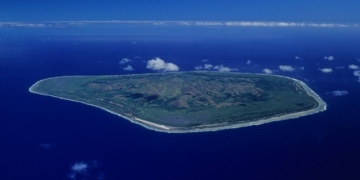When scientists discovered numerous mysterious holes at the bottom of the Bering Sea between Russia and Alaska (USA) last summer, they were puzzled. However, they now believe they have identified the culprit responsible for creating these holes.
The Guardian reports that scientists aboard the German research vessel Sonne participated in an expedition in the Bering Sea in 2022. They captured many images of the seabed, some of which depicted oval-shaped holes approximately 2-3 cm wide.

Scientists have found the answer to the mysterious holes. (Photo: Guardian).
Many creatures inhabit the areas where scientists discovered these mysterious holes, and they have become “the prime suspects.”
Julia Sigwart from the Natural History Museum and Senckenberg Research Institute in Frankfurt (Germany) noted that the holes are too small for sea urchins, and their shape does not resemble the burrows of marine worms.
Another member of the scientific team, Angelika Brandt, also from the Natural History Museum and Senckenberg Research Institute, observed something remarkable: it was a species of crustacean.
Brandt referenced a video recorded 40 years ago by a colleague as evidence. It featured two types of amphipods in Antarctica, showcasing their burrowing behavior. This Antarctic amphipod closely resembles the creature Brandt discovered in the Bering Sea.
While they have not yet directly observed the Bering Sea amphipod digging holes, Brandt and her colleagues believe they behave similarly to their Antarctic relatives, burrowing for reproduction. The larvae, once born, will live in the holes dug by their parents for several weeks, or even months.
This discovery brings hope to scientists, who are eager to make progress in unraveling other mysteries of the seabed.


















































